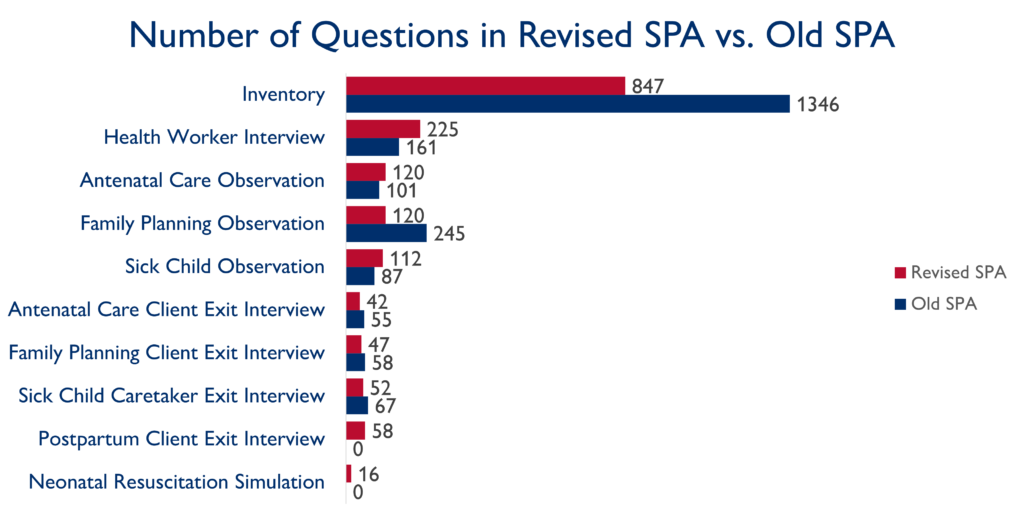Introducing the Revised Service Provision Assessment (SPA)

The DHS Program recently revised the Service Provision Assessment (SPA) survey questionnaires. The SPA is a health facility-based survey that collects information on Quality of Care (QoC), including physical and human resources, as well as the provision of evidence-based care and client-centered and respectful experience of care. All surveys supported by The DHS Program, the SPA, along with Demographic and Health Surveys (DHS) and Malaria Indicator Surveys (MIS), can be tailored to fit specific monitoring and evaluation needs of countries. More than 30 SPAs have been conducted in 18 countries.
Through an open consultative process with technical experts, representatives from WHO, UNICEF, Ministries of Health, and USAID staff, The DHS Program has revised the SPA questionnaires and expanded the breadth of topics covered in the SPA to better meet existing and emerging critical data needs.
About 140 participants from over 50 organizations collaborated through nine technical working groups in an online Community of Practice. The Technical Working Groups developed recommendations and submitted 524 indicators with 427 questions for consideration.

The DHS Program worked with USAID to synthesize and prioritize all recommendations. The revised SPA features 10 questionnaires, including a brand-new client exit interview for postpartum women and newborn resuscitation simulation. In total, 1,184 questions were deleted, and 655 new questions were added to the revised SPA. Overall, 40% of the questions in the revised SPA are new.

DHS Program staff recently reviewed exciting new changes to the SPA in a webinar to launch the revised SPA. Previously the SPA focused on service readiness with extensive measurement of inputs to care. However, research has shown that availability of inputs at a facility does not necessarily translate to better process quality of care. The revised SPA has shifted focus to improve the assessment of process quality of care, both technical and experiential, while reducing the focus on structural quality. Different sections of the SPA questionnaires can be mapped to the SPA Quality of Care Framework shown below.

New content in the revised SPA:
- Validated person-centered experience of care measures. Emerging research has shown how clients’ experience of care is associated with future health service use.
- Additional client characteristics collected in exit interviews.
- Updated clinical observations. The revised SPA focuses on actionable monitoring indicators on provider performance, incorporating advances made in quality of clinical care measurement over the past 10 years.
- Expanded Health Care Worker Interview now includes questions on perception of gender inequality in the workplace, timely receipt of salary, verbal and physical abuse, and other items.
“We now have an updated SPA, better able to meet the needs of the global health field.”
Kristen Wares, Contracting Officer Representative for The DHS Program,
USAID, Global Health, Office of Population and Reproductive Health
The revised SPA also includes an updated client sampling approach and collects information on client load to improve effective coverage calculations. In the SPA revision process, the team sought to balance accuracy, cost, and implementation practicality.
Access the revised SPA core questionnaires in English below. French translations of the tools are forthcoming.


Congratulations! Thanks to all involved in this critical effort.